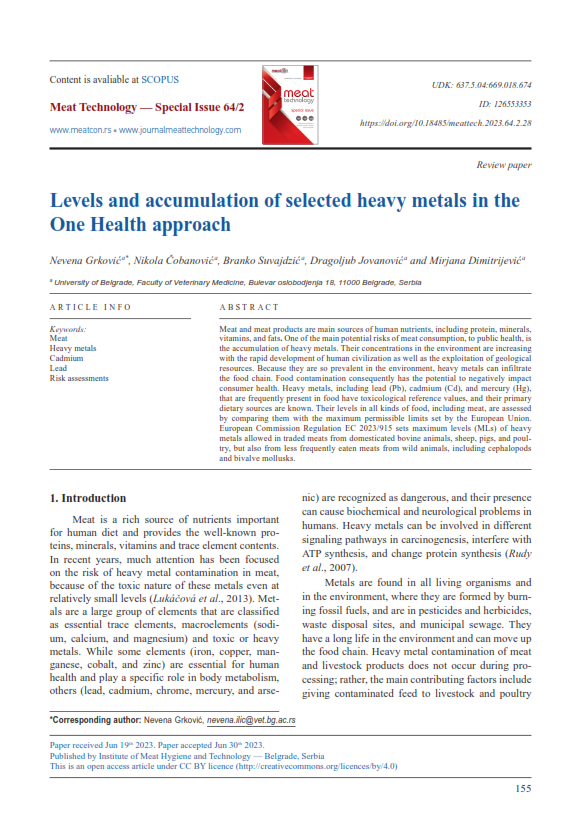Levels and accumulation of selected heavy metals in the One Health approach
Abstract
Meat and meat products are main sources of human nutrients, including protein, minerals, vitamins, and fats. One of the main potential risks of meat consumption, to public health, is the accumulation of heavy metals. Their concentrations in the environment are increasing with the rapid development of human civilization as well as the exploitation of geological resources. Because they are so prevalent in the environment, heavy metals can infiltrate the food chain. Food contamination consequently has the potential to negatively impact consumer health. Heavy metals, including lead (Pb), cadmium (Cd), and mercury (Hg), that are frequently present in food have toxicological reference values, and their primary dietary sources are known. Their levels in all kinds of food, including meat, are assessed by comparing them with the maximum permissible limits set by the European Union. European Commission Regulation EC 2023/915 sets maximum levels (MLs) of heavy metals allowed in traded meats from domesticated bovine animals, sheep, pigs, and poultry, but also from less frequently eaten meats from wild animals, including cephalopods and bivalve mollusks.





